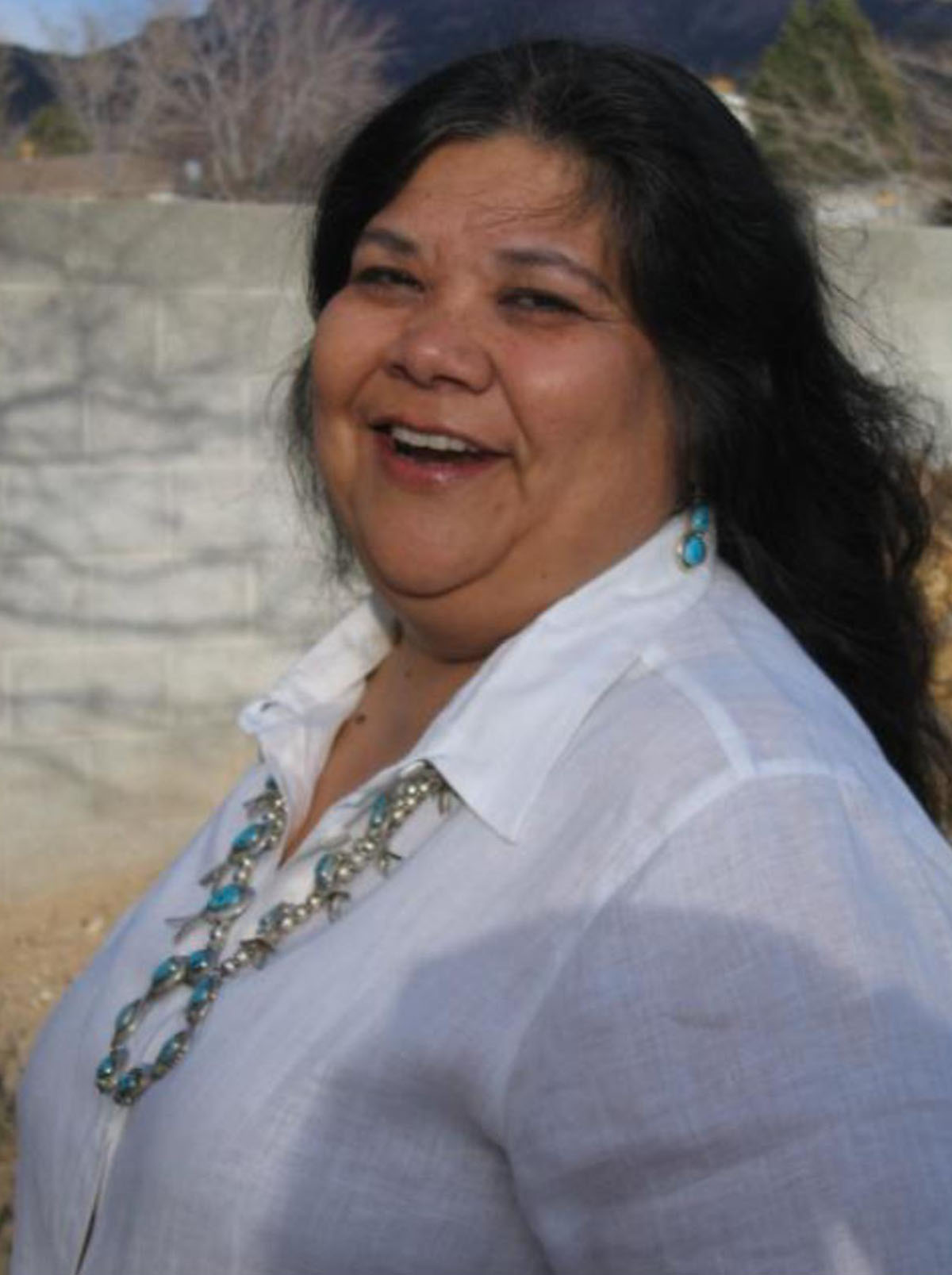Elena Giacci returned to the Southern Ute Reservation to lead a two-day historical trauma workshop titled Courageous Spirit Triumphant Heart. The training was sponsored by the Colorado 6th Judicial District Attorney’s Office and held at the Southern Ute Multi-Purpose facility from Monday, Oct. 11 — Tuesday, Oct. 12. Giacci (Diné) is a renowned speaker and an Anti-Sexual and Domestic Violence specialist based in Albuquerque, N.M who advocates for American Indian and Alaska Native populations.
This training marks her second time on the Southern Ute Reservation. Giacci is no stranger to working with American Indian Alaska Native communities as an advocate. She has been doing the work for over 32 years throughout Native Country and specializing in the field of Violence Against Women. Giacci first visited Ignacio, Colo. in 2013 where she did the community presentation “Kindness.”
“I am sold on being an advocate; I am sold on doing this work; I’m sold on how to navigate when your heart is crushed and you have to get up and serve someone the very next day,” Giacci said.
In a room filled with medical personal, teachers and community advocates, Giacci started by explaining the horrible atrocities Indigenous people have dealt with in the history of this land.
“Native Americans were fighting in WWI but weren’t even citizens of the United States until years later,” Giacci explained. The Indian Citizen Act which was established in 1924 and allowed Indigenous Peoples of the United States citizenship on June 2, 1924. The act of congress was enacted to partially recognize the Native Americans that had previously served in the armed forces.
In August of 1978, the American Indian Religious Freedom Act (AIRFA) became law in the United States, which allowed for American Indians to protect and preserve their inherent right of the freedom to believe, express and exercise the traditional religions of the American Indian, which includes access to sites, use, and possession of sacred objects and the freedom to worship through ceremony and traditions.
In an article in Smithsonian Magazine, published in 2018 to reflect on the 40th anniversary of the American Indian Religious Freedom Act, Southern Ute tribal elder, Kenny Frost said, “Sadly, due to the displacement of Native people to Indian reservations, many grassroots people do not know where their traditional sacred areas and territory lands are located. We risk losing the knowledge of traditional places as those people with traditional knowledge leave this world.”
Bringing up the question, what role does this all play into modern day Native society?
According to the Missing and Murdered Native American Women Report, Washington State Patrol, 2018, “Missing and murdered Indigenous women have disappeared not one, but three times — in life, in media and in the data.”
According to the Department of Justice, Native American women are two and a half times more likely to experience violent crimes and two times more likely to experience rape or sexual assault in comparison to all other ethnicities. Native women are also reported missing and often murdered at alarming rates, disproportionate to non-native women.
Considering the recent death of Gabby Petito, and her highly publicized disappearance, the high-profile news coverage has a lot of Native American communities, leaders, and advocates questioning why Native American women are often not even mentioned in mainstream media. The dehumanization of Native people, especially Indigenous women, plays a huge role in how the world sees the original inhabitants to this land.
With the Biden-Harris Administration came vital change to the Missing Murdered Indigenous Women Movement. Now we also have an Indigenous woman, Deb Haaland, serving as the 54th United States secretary of the interior. Haaland announced in early 2021 that there would be a new Missing and Murdered Unit (MMU) within the Bureau of Indian Affairs Office.
Abigail Echo-Hawk, director of Urban Indian Health Institute told ABC, “We see what representation looks like. You have an indigenous woman leading as Secretary of the Interior with the authority and the ability to address some of the most pressing crises in Indian country.”
Racist — characters, mascots and language have Native people scrambling to come back from eraser tactics that have worked in this country for decades. According to the psychosocial effects of Native American mascots: a comprehensive review of empirical research finding; the images, gestures, and behavior connected to Native mascots negatively impacts Native peoples, particularly Native youth. Research shows that these images and actions contribute to low self-esteem, increased rates of depression, increased rates of self-harm and substance abuse, and increased discrimination in schools against Native youth.
“The mascot issue has been going on for more than 40 years and we are only now beginning to see our people and topics on the national level. Just because it doesn’t make headlines, does not mean the battles are not being fought somewhere in Native America. Our voice doesn’t seem to be strong enough, so protest, lawsuits, and movements are necessary, so that we can be heard, loud and clear,” Amanda Blackhorse wrote in her article published in Indian Country Today in 2015.
Erasing history has always been a tactic used against Native American communities for decades that includes trying to “Americanize” Native youth, a practice that was predominant in the boarding school era. Stripping Native youth away from their families, forcing them to speak English and being punished for trying to be who they are and what they were taught traditionally and culturally — furthering the genocidal ideation of, “kill the Indian, save the man.”
Despite all these challenges and truths, trainings like this bring hope to Native communities and help to build and educate allies.
“Besides you guys being my superheroes, I think we all bring different qualities,” said Giacci. “We are all related, we are all relatives and when we go through something like this together — it makes it an honor and a privilege to share these stories.”

